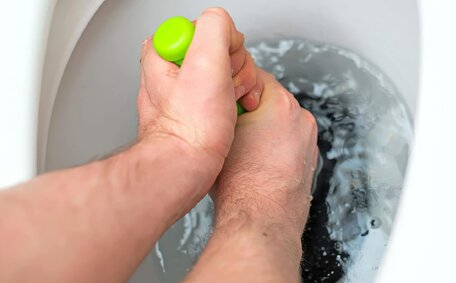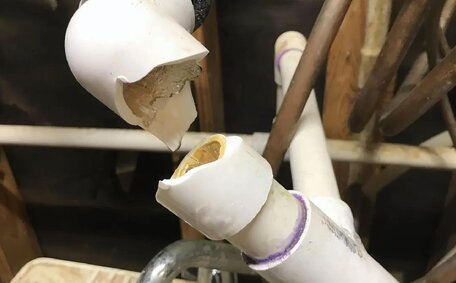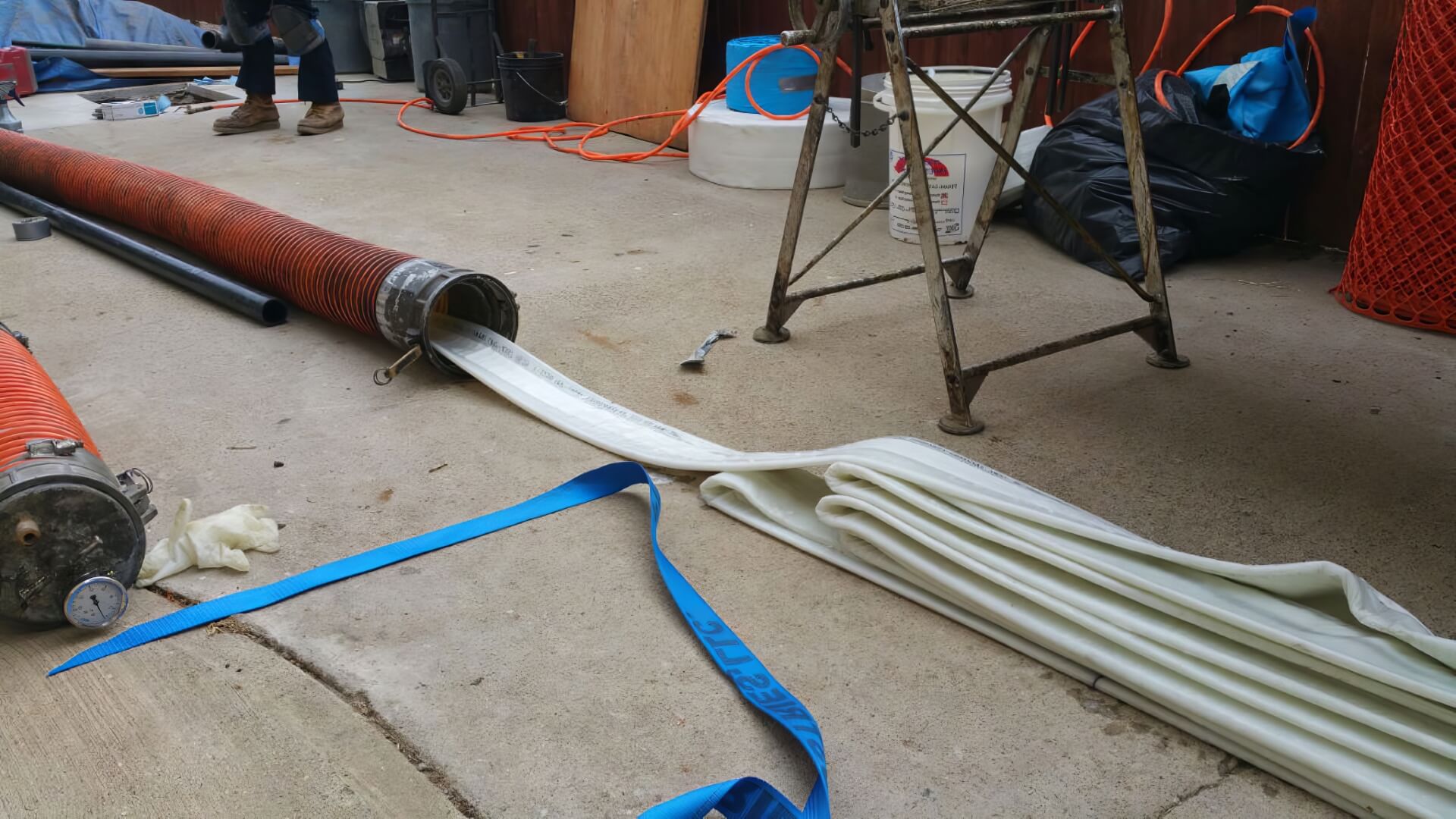Introduction to Pipe Relining
Pipe relining modernises plumbing repair by inserting an epoxy resin lining into damaged pipes, effectively creating a new pipe within the existing one. This technique restores and reinforces existing pipes without necessitating complete replacement.
The key benefits of pipe relining include:
- Minimally invasive, avoiding the need to dig trenches or break concrete to reach pipes
- Extends pipe lifespan for decades
- Faster than traditional pipe replacement
- Far less expensive than traditional methods
- Prevents water supply disruption to your home
Does pipe relining offer an effective solution when pipes are affected by issues like root intrusion, leaks, cracks or corrosion damage? Absolutely. The process involves using CCTV cameras to inspect the condition of old pipes before installation of the epoxy liner. This allows pipes of various sizes to be relined as needed.
Pipe relining internally restores pipes, eliminating major demolition or property damage during essential repairs. Our dedicated plumber can advise if relining is appropriate for your situation after a thorough pipe assessment.
Evaluating if Pipe Relining Allows Relocating Plumbing
Renovating your home often involves relocating fixtures like sinks and toilets to new areas. A frequent query we receive is about the feasibility of moving components to new locations with pipe relining.
The short answer is maybe. Here are the key factors we consider when determining if pipe relining can facilitate relocating plumbing:
- Access points - We need to visually inspect the pipes via CCTV drain camera to understand layout and access. If there are no suitable entry points to insert the epoxy resin liner near the proposed new location, pipe relining may not be feasible.
- Pipe size and shape - The liner needs to fit neatly inside the existing pipework. Severely damaged, misaligned, or irregularly shaped pipes could struggle to accommodate a liner.
- Pipe material - PVC, concrete, and clay pipes are typically suitable for relining, whereas materials like galvanised steel may not be.
- Plumbing layout - The liner can navigate multiple bends, but very winding routes may impede liner installation.
While pipe relining allows some flexibility with reconfiguring plumbing, it has its limits. In some scenarios where access is restricted or layout is overly complex, partial or complete replacement might be the only viable option to relocate fixtures.
If you’re getting your sinks, toilets or appliances like dishwashers moved to new positions, talk to our team about whether pipe relining could work for your plans or if alternative solutions should be considered. We’re happy to assess your current plumbing and provide expert advice on achieving your home renovation goals.
Moving Drain and Vent Pipes
When remodelling or renovating areas of your home, you may need to reposition drain pipes or vents to accommodate new layouts and fixtures. Considering the cost of pipe relining, it can facilitate the move of certain drain components in some situations and prove to be cost-effective.
Key factors we consider when moving drain and vent pipes include:
- Pipe accessibility - Existing access points may allow our team to feed the epoxy lining to the proposed new location of drainage pipes. New access openings can sometimes be cut if required.
- Space for liner installation - Adequate room is needed for the liner to cure and adhere correctly to the interior pipe walls.
- Pipe length - Long straight pipe runs are generally easier to reline and reconfigure than winding pipes.
- Pipe condition - While relining is a viable replacement for your damaged sections, extensive repairs may be complex for pipe relocations.
Where tree roots have infiltrated and damaged stormwater pipes at the existing vent location, pipe relining allows it to be moved to an alternative position not compromised by root growth. Encapsulation of the pipe interior prevents future root intrusion.
As with all pipe relining projects, a detailed drain inspection using CCTV technology allows our team to assess the feasibility and process of moving your drain pipes or vents to new areas of your home when renovating.
Relocating Water Supply Lines
When you need to move plumbing, such as hot water system lines to facilitate renovation plans or install new fixtures, pipe lining can often minimise disruption compared to replacing entire pipe sections.
Key advantages of using pipe relining include:
- Preserving your water pressure and how this maintains flow rates by retaining existing pipe routes
- Avoiding major demolition to walls/floors by accessing pipes via small entry points
- Significantly lower cost than full water line replacement
Our team will evaluate technical aspects such as pipe adjustments throughout your plumbing system, as with any pipe relining project:
- Ensuring supply line access points are viable for liner installation
- Confirming the liner can traverse any tight bends or corners in existing pipework
- Checking relocated pipes meet length limits for effective liner curing
- Validating any realigned sections comply with plumbing regulations
Where suitable, does pipe relining enable water supply lines to be redirected to new fixture locations without the upheaval of completely new pipe installation? Yes, it does. Relined pipes also gain enhanced longevity from corrosion and leak resistance.
Chat to our team about whether pipe relining for moving water lines is the best solution when planning your new bathroom or kitchen renovation.
Adjusting Fixture Position with Pipe Relining
When renovating or remodelling, pipe relining may allow you to reposition plumbing fixtures like sinks, toilets and bathtubs to different areas with less disruption.
If access points are available for epoxy pipe liner installation, fixtures such as a toilet sink can potentially be shifted up to 3-4 metres in any direction. This gives flexibility when reconfiguring room layouts.
However, factors like tight pipe bends, drainage pitch guidelines and space constraints may limit adjustments. For example, toilet flanges need adequate floor area and existing pipe routing may not facilitate relocated appliance connections.
In smaller bathrooms, pipe relining may not enable significant layout changes, like relocating your closet. But for more open floorplans, it can facilitate repositioning fixtures when renovating without major pipe replacements.
Our team can advise on the viability of using pipe relining to shift your bathroom or laundry fittings to better suit your floorplan needs.
Considering Access and Space Needs
When planning bathroom or kitchen renovations, space constraints and access issues often crop up when reconfiguring plumbing. Pipe relining provides solutions by negating much of the need for demolition to run new pipework.
Inserting an epoxy liner into your existing pipes, we bypass many challenges posed by tight spaces. The liners are fed through small access points, sidestepping the extensive removal of tiles, floors or drywall typically required for damaged pipe repairs.
Modern liner materials also allow for some realignment of the pipe route if needed.
Nonetheless, there are limitations to pipe relining; highly convoluted or multi-bend configurations may not be suitable for a liner. But in many typical homes, relining helps optimise available area when renovating, with minimum disruption to your walls, floors and ceilings.
Chat with our team if you have any access issues or dimensional constraints when planning your upcoming bathroom or laundry renovations. We can advise if pipe relining is a practical solution for your situation.
Meeting Code Requirements for Layout Changes
Adhering to local trade waste regulations and building codes is paramount when altering your home’s plumbing layout, ensuring that changes are safely executed and risks are minimised.
Our expert plumbers stay current with compliance requirements, ensuring your pipe relining project adheres to key considerations such as:
- Wastewater discharge rules
- Allowable pipe sizes and gradients
- Protection of drinking water supplies
- Ventilation guidelines
- Fixture clearances
This assists in avoiding future compliance issues. Our priority is always delivering safe, sustainable and code-compliant solutions for your plumbing needs.
Hiring Contractors with Expertise for Complex Jobs
When pipe relining is required for complex renovations or layout changes, it’s crucial to hire licenced plumbers with expertise in this specialty service.
Before commencing pipe relining services, advanced trades skills and experience are essential for the technical aspects of installing liners and reconfiguring pipes.
At Castle Hill Plumbing, our team are highly qualified in pipe relining and equipped to take on intricate projects requiring precision drainage analysis via CCTV drain inspection technology.
Our relining services safely address broken pipes, difficult access, and complex routes while complying with stringent regulations.
For superior pipe relining guidance and dependable craftsmanship for your bathroom or kitchen remodelling, reach out to schedule an onsite consultation.
The Pipe Relining Process and What to Expect
Our team adheres to a clear pipe relining process for optimal results with minimal disruption, effectively catering to your relocation needs.
The process starts with a CCTV drain inspection. We use a specialised camera to navigate through your pipes, assessing damage and viability for relining. This helps us develop a clear plan.
We then prepare the pipes - cleaning thoroughly and removing debris or intrusions through an access panel. Any access points needed are identified.
The damaged pipe’s interior is thoroughly coated with epoxy resin along its entire length. Next, inflating the liner tube presses the resin into the pipe’s cracks and gaps.
As the resin cures, it hardens into a smooth new barrier, reinforcing the pipe’s structural integrity. Following the epoxy’s full set, we reconnect supply lines to restore functionality.
Pipe relining facilitates a non-invasive repair process via small access points. It prolongs the lifespan of pipes without the requirement to excavate trenches or dismantle walls and floors.
Chat to our team about whether pipe relining could benefit your upcoming plumbing renovations.
Professional Assessment: When Pipe Relining is Appropriate
Determining if pipe relining is the right solution for your plumbing requires an expert assessment from qualified tradespeople.
At Castle Hill Plumbing, Our trained plumbers possess the expertise to assess whether relining is appropriate for your specific circumstances. We take a consultative approach and consider factors like:
- Pipe layout and configuration
- Nature and extent of damage
- Fixtures to be relocated
- Access point viability
- Compliance with regulations
In some instances, exploring alternative plumbing solutions such as replacement of your pipes may be the only feasible option due to certain technical limitations. Other times, relining is perfectly suited to deliver the desired outcome.
Our comprehensive CCTV drain camera inspections yield unambiguous imagery and measurements to analyse your pipes. We then recommend the most suitable solutions for your renovation, be it relining or alternative methods.
For expert guidance backed by industry qualifications, get touch with us and trust in our assessments to understand where pipe relining is appropriate for preserving your plumbing.
Complying with Regulations for Pipe Relocation Projects
Adherence to plumbing regulations and building codes is essential for safety and reliability when altering pipe layouts and relocating plumbing fixtures.
- Water discharge rules - Ensuring relocated appliances and fixtures discharge wastewater along approved routes.
- Pipe gradient guidelines - Repositioned drains must retain appropriate slopes to ensure adequate water flow.
- Ventilation standards - Adequate venting must connect back to adjusted pipework.
- Drinking water parameters - Supply lines with liners fitted must not risk contamination.
- Fixture clearances - Repositioned components require minimum distances from walls and floors.
Our team conducts comprehensive assessments, ensuring you’re informed about compliance for plumbing realignment with pipe relining.
This ensures full adherence with Australian Plumbing Codes like AS/NZS 3500 and your local council trade waste policies when implementing layout changes.
For guaranteed peace of mind, speak to our experts about ensuring your kitchen pipe relocation project meets all legal requirements.
Maintaining Your Plumbing System Post-Relining
Once your pipes have been successfully relined, some ongoing maintenance is recommended to get the maximum lifespan from your restored plumbing.
We recommend biennial inspections of your relined pipes with CCTV technology. This proactive approach helps our plumbers monitor the liner’s condition and identify potential issues promptly.
Simple precautions like avoiding pouring fats or harsh chemicals down drains will also protect your relined system from blocked drains and damage.
Keep an eye on fixtures for any signs of leaks or inconsistent water flow. Should you detect drips or changes in pressure, contact us for prompt assessment and pipe repair as necessary.
With occasional inspections and some basic care, you can expect quality epoxy liners to serve extremely well for 50 years or longer before needing replacement.
For all your maintenance requirements or future pipe relining jobs, your plumber at Castle Hill Plumbing has the expertise to keep your plumbing running efficiently for decades to come.






